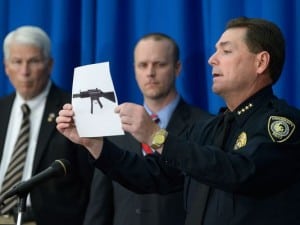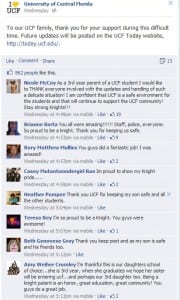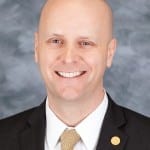
“My roommate just pulled the fire alarm and he’s got a gun.” UCF Police received that harrowing 911 call from an on-campus resident at the University of Central Florida in Orlando, Fla., shortly after midnight on Monday, March 18, 2013. When police arrived, they rescued the caller and found the roommate dead of a self-inflicted gunshot wound. Investigators soon found a handgun, an assault weapon, improvised explosive devices and a “to do” list in the subject’s room that suggested plans for a mass shooting.
The quick-thinking roommate’s 911 call and the rapid police response helped to prevent a tragedy at the second-largest university in the country.
Given the recent history of mass shootings, the discovery of the “to do” list, the fact that the suspect was living on-campus despite not being enrolled in classes at the time and failing to pay rent, and UCF’s status as a public university in a state with the nation’s broadest public record disclosure laws, UCF News & Information—the university’s primary media relations office—knew that it faced a major crisis communications challenge.
The first thing organizations should do when facing a crisis is to create realistic goals and stay true to those goals through the event. The UCF team quickly established several goals that proved key to managing the ongoing crisis:
1. Maintain timely and transparent communication with target audiences, including the campus community, parents, the public and media, using multiple platforms.
2. Shape news coverage to highlight UCF’s quick police response and high-quality counseling services and minimize stories that reflect negatively on the University.
3. Limit media coverage to one week in an effort to resume normal campus life.
TIMELY COMMUNICATION
The university made a commitment early on to be transparent and to quickly release information as it was confirmed through the police investigation. Communication with campus partners, such as Housing & Residence Life, Counseling and Psychological Services and others, began immediately following the incident, and News & Information set out to incorporate their positive efforts into the larger campus response storyline.
The News & Information office worked hand-in-hand with UCF Police, the FBI and other agencies to ensure accurate, consistent communication with the University and Central Florida communities.
As nearly 100 local, state and national reporters descended onto campus, News & Information communicated the frightening details of an averted campus crisis in a manner that upheld UCF’s reputation as a safe place for students to live and learn.
Early Monday, protocol from crisis plans were activated, including the emergency website and the UCF Alert system, which sends texts and emails to more than 70,000 UCF students and employees.
News & Information was responsible for creating UCF Alerts, posts on the emergency website and the UCF news site, “UCF Today,” and updates to UCF’s Facebook and Twitter pages. Updates across multiple platforms began at 2:09 a.m., and posts continued as information became available.
TRANSPARENCY
To conveniently provide video, audio, images and records to media, an online Dropbox account was created, and staff directed reporters there for access to files. UCF held news conferences on Monday and Tuesday to provide investigation updates. On Tuesday, officials showed unedited shoulder-camera video footage taken by one of the first officers on the scene in Tower 1.
The University’s commitment to transparency was shown by providing information and records to the 75 local and national reporters and news desks covering the incident and responding to more than 1,500 inquiries from media, concerned parents and community members.
Following the incident, a reporter emailed: “Thanks for UCF and your police department’s admirable transparency during this trying incident. Other entities could learn from how you’ve handled this event.”
Media indicated that UCF’s daily updates were easy to digest and helpful and that the Dropbox made the sharing of files convenient. Additionally, a national ABC News team said that the event was one of the best-managed crises they had ever covered.
NEWS COVERAGE

UCF’s chief spokesperson provided phone and on-camera interviews to local and national media before 5 a.m. In addition to personal interviews and news conferences, reporters were updated throughout the day and week as updates and supporting materials became available.
An important decision was how the media releases were formatted.
All updates after the initial news release consisted of new bullet points above previously released information. From News & Information’s standpoint, sending updates in this format took significantly less time than rewriting prior news releases and, for media, the bullet points easily drew attention to the most recent developments.
As investigation updates slowed, efforts shifted to providing information about UCF’s counseling services.
Media primarily focused on the areas News & Information advocated: the rapid police response, the dramatic police video, and the therapy dog and counseling services. Multiple media outlets highlighted the UCF Alert system as a national leader in campus emergency response and notification
Many of the difficult questions News & Information prepared for regarding housing policies went unasked because media instead reported on the stories presented to them.
BACK TO NORMAL
The carefully planned, strategic release of information throughout the week resulted in favorable news coverage.
More than 800 local, national and international media outlets covered the incident, making more than 1,600 media requests that resulted in 7,000 stories that week, the majority of which were positive.
Feedback from stakeholders was overwhelmingly positive, and overall response from both the campus and outside communities indicated that UCF is indeed a safe campus. PRN
(This article is an excerpt from PR News’ Media Relations Guidebook, Vol. 2. It was writen by Grant Heston, associate VP of communications and public affairs at University of Central Florida, and Courtney Gilmartin, senior communications coordinator of University of Central Florida News & Information. To order a copy of the guidebook, please go to www.prnewsonline.com/prpress/.)
SIDEBAR: Crisis Averted, Lessons Learned


Speed vs. accuracy: News & Information quickly believed in the “90-10 rule” which is that “90% of the time, only 10% of what you first hear is true.” Information came at the team quickly, and decisions had to be made about what was accurate and what could be released. These decisions were frequently made as reporters relentlessly sought details and confirmation or denials of rumors.
Lesson: Establish a process for who determines what information can be shared, how to share it and when to release it.
Staffing for intensity and duration: Staff members can work a few 20-hour days in a row before needing to get some real rest. As the hours and days wear on, a plan needs to be activated to have fresh bodies work the crisis, as well as to manage existing operations.
Lesson: Create a staffing plan before the crisis takes place, one that ideally has partnerships with other areas or institutions to assist during a prolonged crisis.
Tell your stories yourself: If you decide not to talk, that means everyone else gets to shape the story of what happened during a crisis and how your organization responded. Leadership needs to understand that, especially today, a “bunker mentality” is the surest way to lose influence over how your organization is perceived
Lesson: Begin conversations with your leadership now about your organization’s philosophy about access and transparency during a crisis. Create and support an atmosphere of “strategic openness.”
Know your organization’s “heat index”: Many outside factors influence how much “heat” your organization is willing to take. Do you have a new CEO? Is stock price at risk? Are there past instances of difficult public issues? These types of factors cannot be ignored and must influence how you approach the public aspect of a crisis response.
Lesson: Understand the climate in which the organization is operating and craft a crisis response that fits those specific needs.
This sidebar was written by Grant Heston and Courtney Gilmartin, who work in communications at University of Central Florida.
CONTACT:
Grant Heston, [email protected].
This article originally appeared in the July 21, 2014 issue of PR News. Read more subscriber-only content by becoming a PR News subscriber today.
